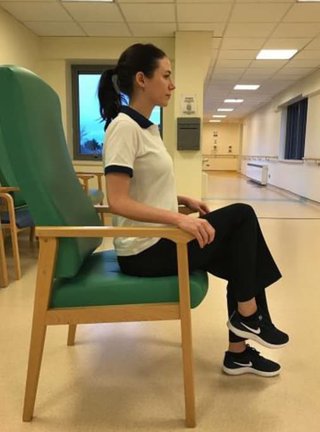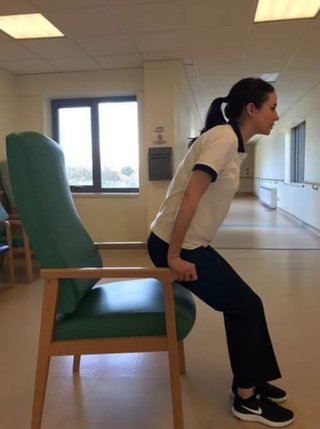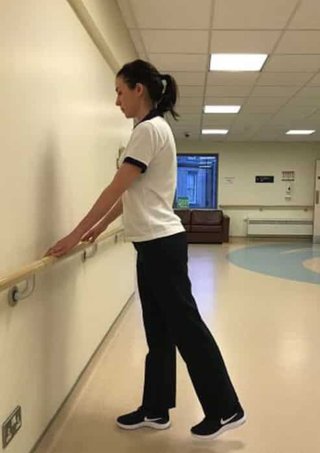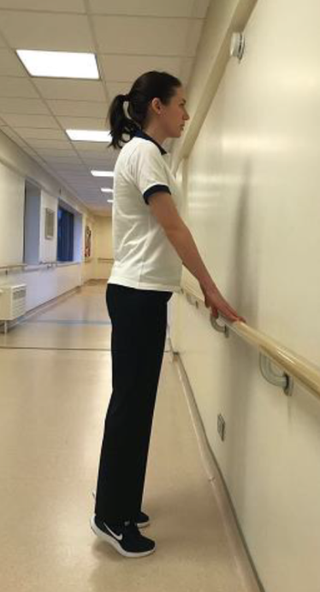It's normal to feel tired, weak or short of breath when you are recovering from COVID-19. But being active can help your recovery if you take your time and set small goals.
Do not worry if you feel more tired and have less energy than usual. This is normal after viral infections like COVID-19.
Many people feel better in a few days or weeks after a COVID-19 infection has gone. Most people recover within 12 weeks. But some people have fatigue for longer. We're still learning about the long-term effects of COVID-19.
Symptoms that may affect your exercise plans
Common COVID-19 health problems may affect how well you can exercise.
These include:
- shortness of breath
- clearing phlegm - this can depend on how you were affected by the virus
- extreme tiredness (fatigue) and a lack of energy
- muscle weakness and joint stiffness
Start slowly
Regular physical activity is good for you but it may take you time to get back to your normal activities.
Over the first few weeks:
- start slowly and introduce new activities gradually
- set yourself realistic targets each week
- rest when you feel tired
- go at your own pace - do not compare yourself to others
Advice on conserving your energy after COVID-19
Slow down if you notice you are very tired and cannot do other everyday things in the day or 2 after physical activity.
Only increase your activity when you:
- can maintain a level of activity without your symptoms getting worse
- feel you can do a bit more
How to plan, prioritise and pace your activities if your recovery is difficult
Non-urgent advice: Talk to your GP if:
- you have any concerns about starting exercise again
- you still find it hard to exercise 8 to 12 weeks after your recovery
- your symptoms get worse in the day or 2 after exercise
They may refer you to a physiotherapist.
If you feel short of breath
It is important to monitor your breathing when you exercise. You should exercise at a level where you can talk and not feel out of breath.
Shortness of breath after COVID-19
Walking
Walking is one of the easiest but best ways to begin to regain your strength and fitness.
Set short realistic goals at first, such as walking for 5 to 10 minutes. If you are very weak, your goal might be to walk to the toilet.
Try to plan your walk so there is somewhere to take a break if you feel tired or short of breath. This might be a bench or a wall.
Slowly increase the time you spend walking. For example, you could walk for 5 minutes a day during week 1 and 10 minutes a day during week 2. But go at your own pace.
Exercises if you cannot leave your home
You may be in hospital or unable to leave your home. But you can still include some physical activity in your daily routine.
Being active and avoiding long periods of bed-rest is important. It can help you to recover more quickly - both physically and mentally.
Exercises to start with
You can do the following exercises in your chair, at home or in hospital.
For some of the exercises you'll need a chair with armrests.
Seated march

- Sit up straight in the chair with your feet flat on the floor.
- Lift 1 knee so your foot is off the floor.
- Lower your foot to the floor.
- Repeat the exercise 20 times on each leg.
Seated leg lift

- Sit up straight in the chair with your feet flat on the floor.
- Lift your foot out in front of you until your leg is straight.
- Hold for 3 seconds.
- Lower your foot back to the floor.
- Repeat the exercise 10 times on each leg.
Sit to stand

- Sit up straight in the chair with your feet flat on the floor and your hands on the armrests.
- Push down on your hands and stand up.
- Lower yourself back into the chair slowly.
- Repeat the exercise 10 times.
Rowing arms

- Sit up straight in the chair with your feet flat on the floor.
- Lift your arms so that your hands are at your shoulders.
- Push your arms straight out in front of you - your arms should be parallel with the floor.
- Bring your arms back to your shoulders.
- Repeat the exercise 10 times.
Toe lifts

- Sit up straight in the chair with your feet flat on the floor.
- Keeping your heels on the floor, lift your toes up of the floor.
- Lower your toes to the floor.
- Repeat the exercise 20 times.
Side legs

- Stand up straight with your hands against a wall or holding the back of a chair.
- Keeping your leg straight, lift your leg out to the side.
- Lower your leg back to the standing position.
- Repeat the exercise 15 times on each leg.
Standing exercises
If you have been in hospital, your physiotherapist will tell you if you're ready for the following advanced exercises.
Leg back

- Stand up straight with your hands holding a bar or the back of a chair.
- Keeping your leg straight, lift your leg out behind you.
- Lower your leg back to the standing position.
- Repeat the exercise 15 times on each leg.
Knee raise

- Stand up straight with your hands holding a bar or the back of a chair.
- Stretch your arms out so there is as much space as possible between you and the wall or chair.
- Lift 1 knee up in front of you as high as you can.
- Lower your knee back to the standing position.
- Repeat the exercise 15 times on each leg.
Heel raises

- Stand up straight with your hands holding a bar or the back of a chair.
- Lift your heels so that you are standing on the tips of your toes.
- Lower your heels back to the standing position.
- Repeat the exercise 20 times.
More exercises
When you work up to it, you can include more exercises in your daily routine.
Find more exercises that you can do indoors involving:
After your recovery, keep being active. Try to walk at least 30 minutes, 5 days a week. Check with your local gym or sports club for activities that may interest you. For example, a local walking group.
Exercises and photographs kindly provided by Clontarf hospital physiotherapy department.